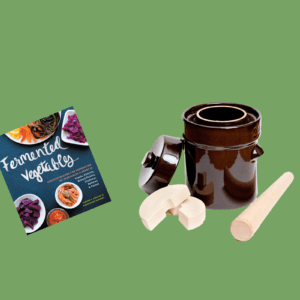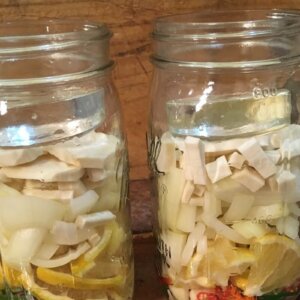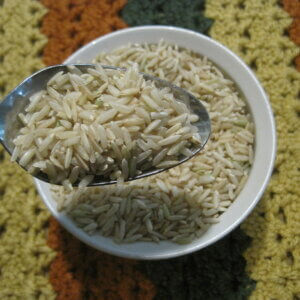Garlic bread, garlic mashed potatoes, garlic pesto, garlic-y vegetable stew, garlic aloo gobhi — are you seeing a theme here? Garlic! This article is going to talk about the popular ingredient in a new way. Instead of focusing on all the wonderful recipes with garlic, we’re going to discuss how its medicinal properties can spice up your health.
Believe it or not, garlic has many benefits (beyond the ones for our taste buds when paired with our favorite meals). The health benefits of garlic have been documented from scientific articles to ancient Indian mythology and folklore.
Indeed, I have some dear friends who eat garlic only when they’re ill due to the folklore associations in India’s culture. They have such great respect for the medicinal benefits of garlic (and onions, but that’s another article for a different time) and many stories of how it has healed them.
I would recommend researching the mythology behind garlic in India. It’s fascinating!
Maybe we’re getting off track here. Let’s talk about garlic, what it is, where it comes from, what it’s good for, and how it can be used.
What Is Garlic?
Garlic is in the lily family (Amaryllidaceae). Yes, that’s right, lily (so are onions). Garlic and onions are cousins, you might say.
Anyway, a garlic bulb is made up of many smaller garlic cloves; all wrapped in a papery, white skin. Garlic has the most pungent smell among the lily family, and when it’s chopped or crushed, it emits this strong scent and has a slightly bitter flavor. The flavor varies depending on if it has been dried.
Garlic is native to Central Asia and has been used for thousands of years in both culinary (of course) and medicinal purposes.
Fun fact: It has been commonly used to ward off vampires.
If you regularly use garlic in preparing your food, you’ll be glad to know it has been scientifically proven to benefit for your health. The USDA has provided nutritional facts for garlic, saying that raw garlic contains calories, carbohydrates, protein, sodium, potassium, manganese, and vitamin C. Though considering we generally eat small amounts of garlic, the nutritional benefits we reap from it are rather small.
Documented Benefits of Garlic
- Immune system support: Due to a sulfur-containing compound found in garlic called allicin (as well as a few lesser known health-promoting compounds), recent studies have found that garlic reduces systemic inflammation and restores white blood cell levels. In simpler terms, garlic helps fight against and prevent the common cold.
- Antiviral and antioxidant: The same compound (allicin) in garlic helps prevent viruses from entering and replicating within our cells.
- Lower cholesterol: A study found positive results using garlic extract and garlic supplements to reduce cholesterol.
- Lower blood pressure: Other research has found that due to garlic’s potential to reduce cholesterol levels and positively impact the immune system, it can reduce both systolic and diastolic blood pressure. Benefits were found in a study where participants of a control group consumed approximately 2 cloves of garlic for a 150-pound person for four weeks.
- Regulate blood sugar levels
- Better gut health: Most people have heard of probiotics, but many may be unfamiliar with prebiotics. Well, if you’re only now hearing of them, let me tell you, they’re as important as probiotics, and there is evidence that garlic is full of them. Prebiotics actually feed healthy bacteria in your gut.
Note: Just because garlic has positive effects for many, does not mean its friendly to everyone’s GI tract. With garlic being high in fructans, it can trigger digestive issues like gas and bloating, especially for those who struggle with irritable bowel syndrome.
- Reduce heavy metal accumulation in blood
Now that we’ve discussed the potential benefits of garlic and its positive impact in our lives, let’s talk about negatives. Are there any side effects?
With garlic being such a potent ingredient in our day-to-day lives, we would have heard about potential risk factors associated with it. The biggest risk factor associated with the consumption of garlic is one that we’ve all heard of — bad breath. Aside from halitosis, there aren’t any known side effects that would occur (beyond allergic reactions).
The best way to receive the benefits of garlic is to eat it raw. Raw garlic has the highest allicin content, as opposed to cooked or roasted. So next time you’re following a recipe that calls for 1 clove of garlic, add 3 cloves instead. Or go the route my Indian culture-respecting friends take and use garlic like a potent medicine — to be consumed in times of need.
Whatever your choice, you’re certain to benefit. People have been eating garlic for thousands of years, and science is just now catching up to confirm the medicinal benefits of garlic.








































7. Reduce Heavy Metal accumulation….no further mention of that supposed benefit and the lonely heading appears below the note about gut irritation. Please follow up. Thanks
Hi great question/observation. There have actually been quite a lot of studies done on garlic’s ability to absorb heavy metals. These studies have ranged from land-based (planting garlic in heavy metal-deposited soils) to rats (sadly) and human. There’s some interesting science behind why/how it does this and I encourage you to look into it! Here’s a few links that can be helpful: https://hero.epa.gov/hero/index.cfm/reference/details/reference_id/1344659
https://www.nature.com/articles/s41598-021-85269-4